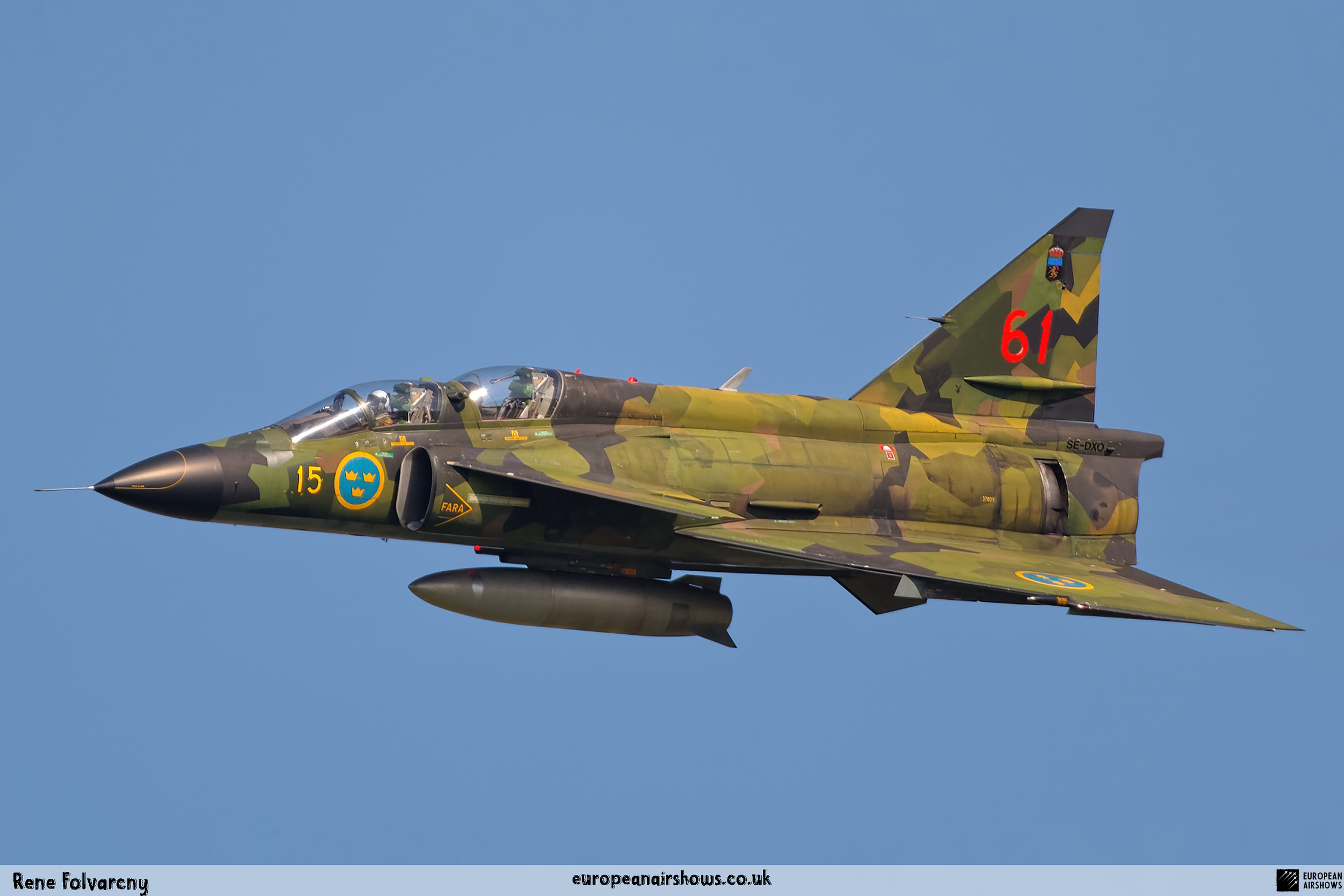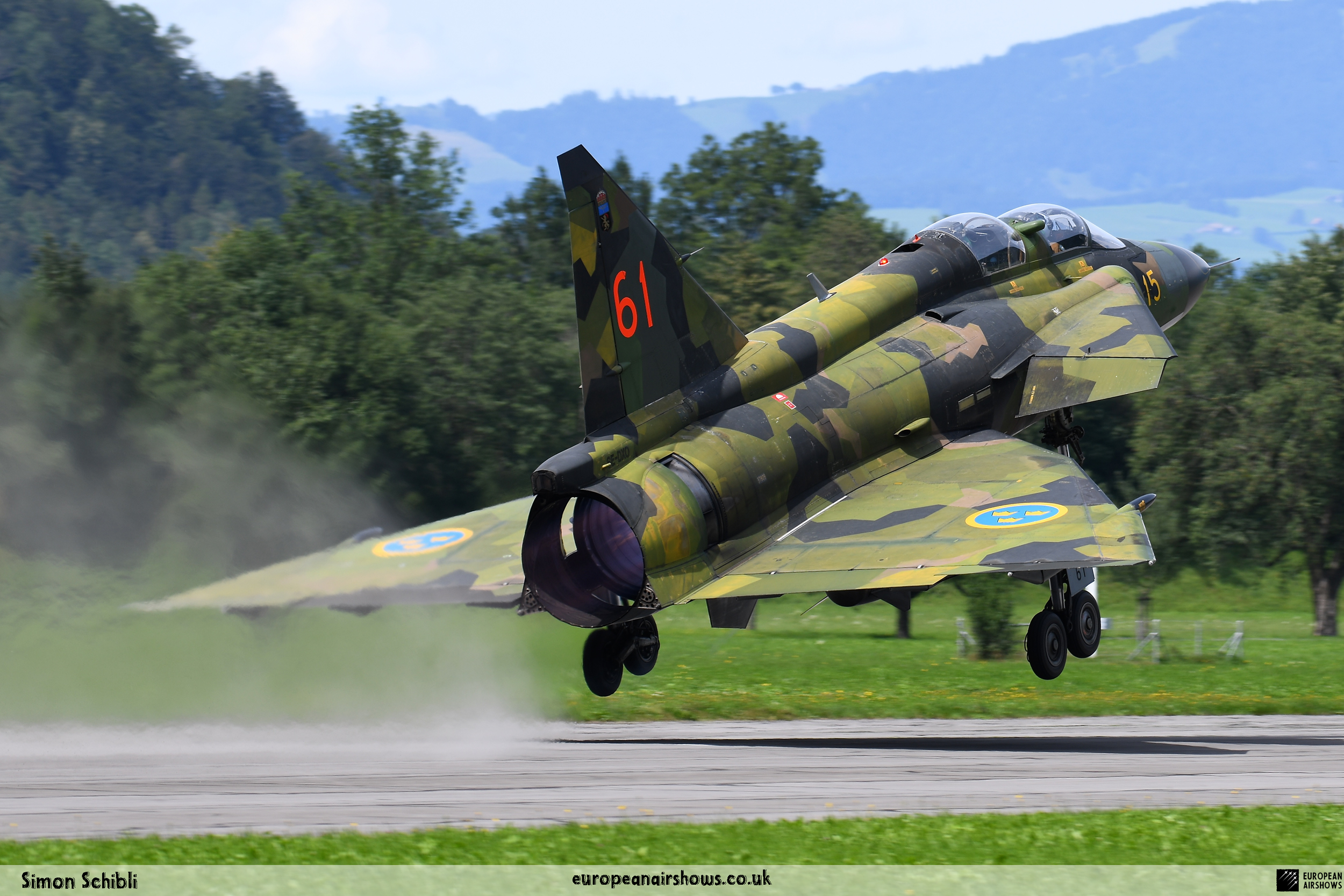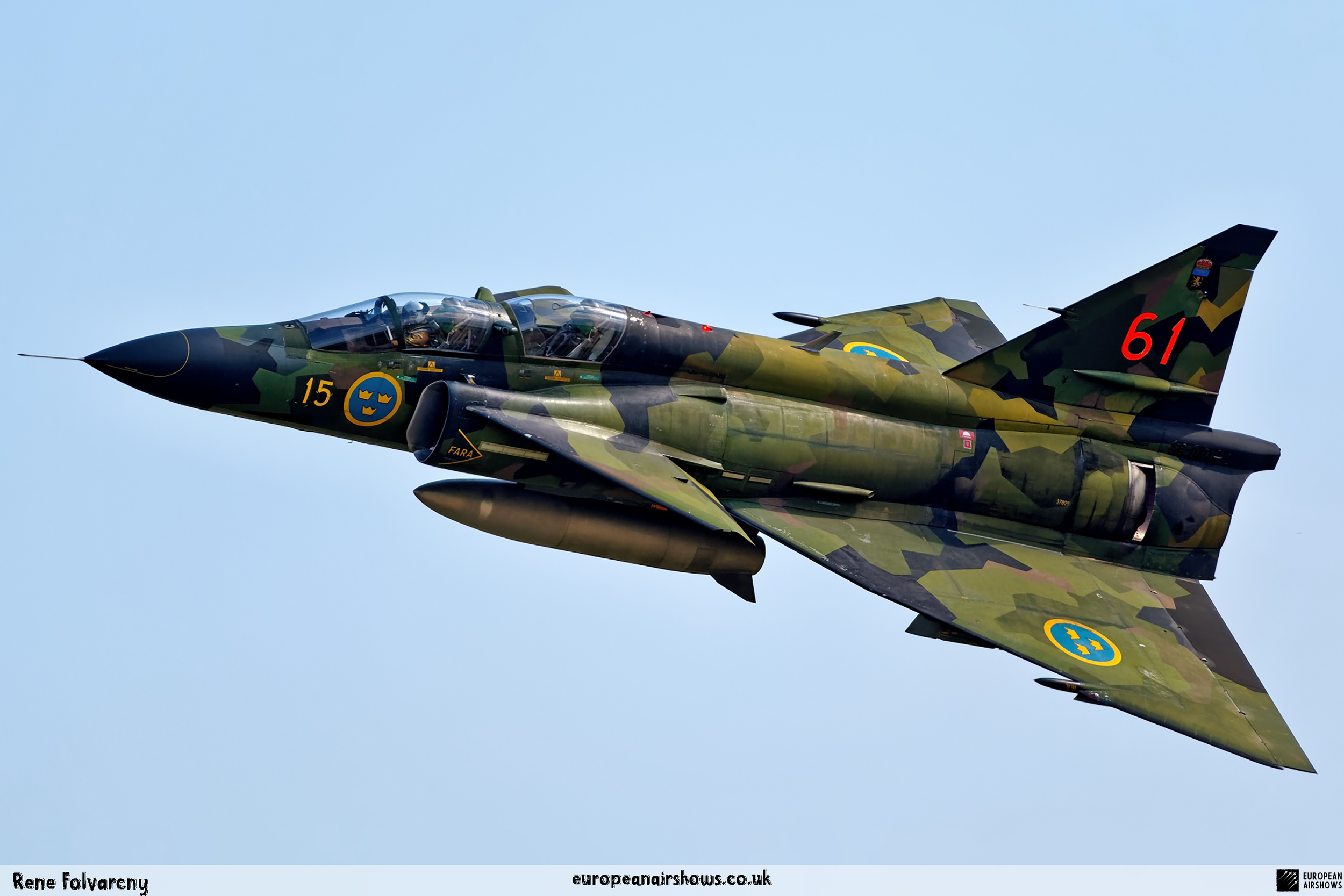
May 15 / Viggen SE-DXO First Post Restoration Flight
First Flight 15 May 2018
Viggen SE-DXO
The Saab 37 Viggen was a single-seat, single-engine, short-medium-range combat aircraft designed and developed by Saab, a Swedish aerospace company, in the late 1960s. It was built to replace the ageing Saab 32 Lansen and Saab 35 Draken and was known for its unique delta wing design, canard foreplanes, and robust STOL (short takeoff and landing) capabilities.
In the early 1970s, Saab developed a specialized electronic countermeasure (ECM) variant of the Viggen called the SK-37E to provide electronic warfare capabilities to the Swedish Air Force. The SK-37E was equipped with advanced ECM systems to disrupt and deceive enemy radar and electronic systems, including jamming equipment, chaff dispensers, and radar warning receivers.
The SK-37E primarily served as a training platform for Swedish Air Force pilots in electronic warfare tactics and techniques. Moreover, it also served as a testbed for evaluating and developing new ECM technologies and tactics for use in combat aircraft.
The SK-37E was equipped with a comprehensive suite of ECM equipment, including active and passive jamming systems, radar warning receivers, and countermeasures dispensers. These systems allowed the SK-37E to simulate electronic threats and train pilots in countering enemy radar and missile systems. It served with the Swedish Air Force for several decades, providing invaluable training and testing support for electronic warfare operations.
SE-DXO was one of the SK-37E aircraft built in 1974 and delivered to F7 ‘Skaraborgs flygflottilj’ Swedish Air Force on February 24th, 1974, where it was used as a trainer with a tactical code 61. Later, it was transferred to F 15 “Hälsinge flygflottilj,” where it served until the second half of 1999. In the second half of 1999, the aircraft was converted to an SK37E for electronic countermeasure duties and delivered to F4 ‘Jämtlands Flygflottilj’ at Östersund-Frösön on January 27th, 2000, coded F4-72. It was later transferred to F 21 “Norrbottens flygflottilj” and then to the Swedish Air Force test unit, Försökscentralen (FC), based at Linköping/Malmen.
The Viggen performed its last flight with the Försökscentralen on June 26th, 2007, when it landed at Vårdsberg and was handed over to Saab AB. After being stored at Såtenäs, the aircraft was restored back to its airworthy condition by the skilled engineers of the Swedish Air Force Historic Flight. It performed its first post-restoration flight on May 15th, 2018, as SE-DXO from the F 7 Wing at Såtenäs after being approved by the authorities on March 21st, 2018.
The Viggen is painted in the unique four-colour camouflage, as all Viggens were painted from the late 1970s. It is currently operated by the Swedish Air Force Historic Flight on behalf of the owner, Saab. The SK-37E played a significant role in enhancing the Swedish Air Force's electronic warfare capabilities and contributed to the overall effectiveness of Swedish combat aircraft in countering electronic threats. Its legacy continues to be recognized in the ongoing development of ECM technologies and tactics in modern combat aircraft.
SK-37E Viggen Facts
The SK-37E is a specialized electronic countermeasure (ECM) variant of the Saab 37 Viggen, a Swedish combat aircraft developed in the late 1960s.
The SK-37E was primarily used for training Swedish Air Force pilots in electronic warfare tactics and techniques.
It was equipped with advanced ECM systems, including jamming equipment, chaff dispensers, and radar warning receivers, to disrupt and deceive enemy radar and electronic systems.
The SK-37E played a crucial role in maintaining the proficiency of Swedish Air Force pilots in countering electronic threats and in testing new ECM technologies.
It served as a testbed for evaluating and developing new ECM technologies and tactics for combat aircraft.
The SK-37E contributed to enhancing the electronic warfare capabilities of the Swedish Air Force and the overall effectiveness of Swedish combat aircraft in countering electronic threats.
As technology advanced, the SK-37E was eventually retired from active duty, but its impact on electronic warfare training and development continues to be recognized.
The SK-37E’s legacy lives on in the ongoing development of ECM technologies and tactics in modern combat aircraft.
The aircraft was known for its comprehensive suite of ECM equipment, including active and passive jamming systems, radar warning receivers, and countermeasures dispensers.
The SK-37E’s role in training and testing electronic warfare operations highlights its importance in enhancing the electronic warfare capabilities of the Swedish Air Force.








